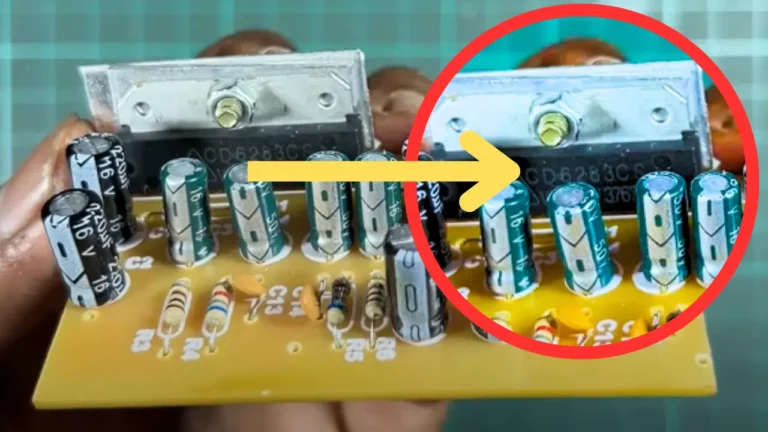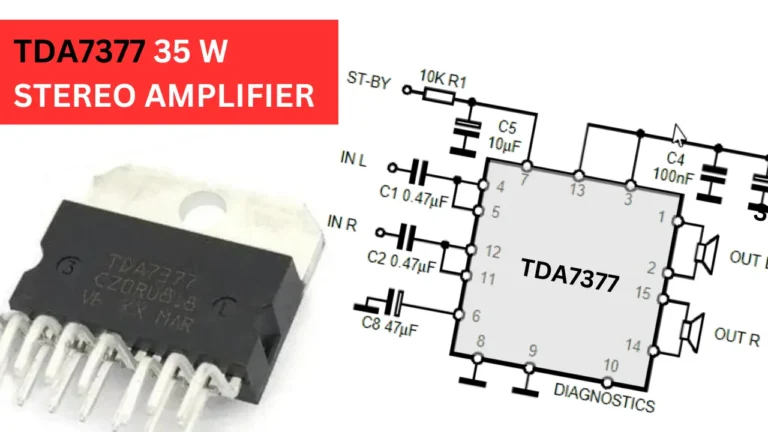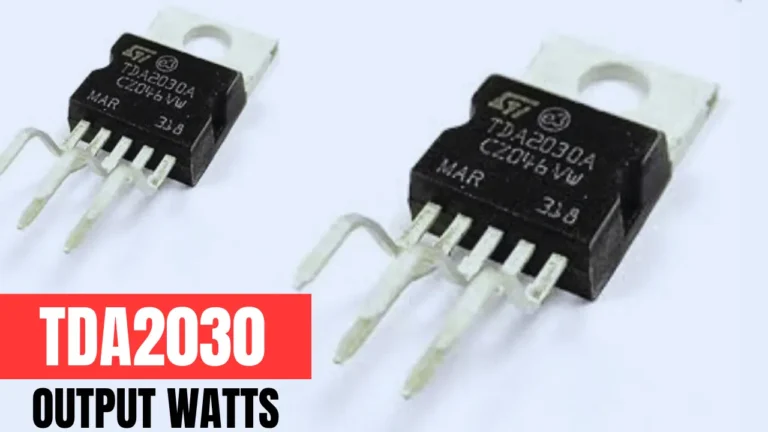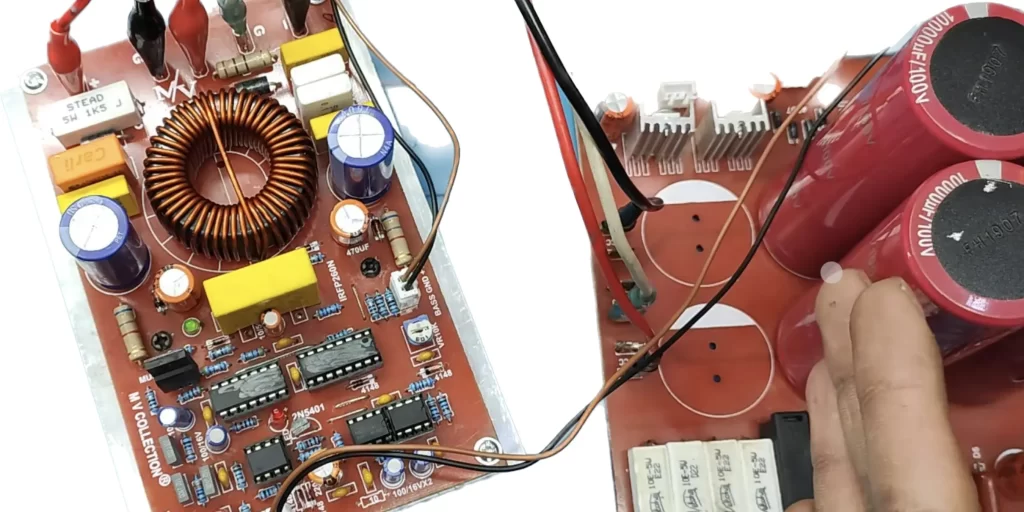
The Class D amplifier is a type of audio amplifier that uses pulse-width modulation (PWM) to amplify an audio signal. It is a highly efficient amplifier that is commonly used in audio applications such as home theater systems, car audio systems, and professional audio equipment.
Also Check : D900 Class D Amplifier Project
How Class D Amplifier Works
Class D amplifiers use a unique method of amplification that involves converting the analog audio signal into a digital signal and then processing it with a series of high-speed switches. Here is a brief overview of how Class D amplifiers work:
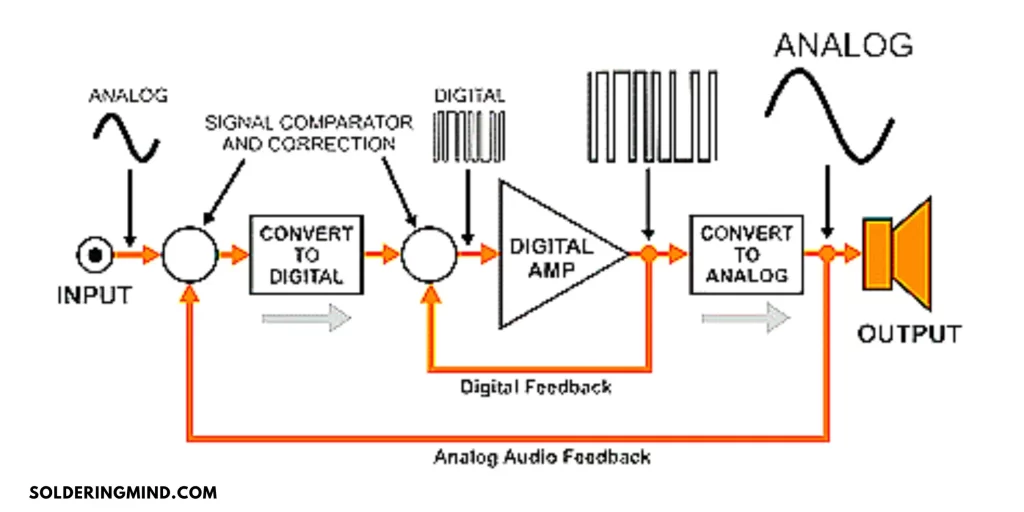
Analog-to-Digital Conversion
The incoming analog audio signal is first converted into a digital signal using an analog-to-digital converter (ADC). The digital signal consists of a series of samples that represent the amplitude of the audio signal at each point in time.
Pulse-Width Modulation
The digital signal is then processed using a technique called pulse-width modulation (PWM). In PWM, the amplitude of the digital signal is represented as a series of pulses that vary in width. The width of the pulses is proportional to the amplitude of the original analog signal.
High-Speed Switching
The PWM signal is then used to drive a series of high-speed switches (typically MOSFETs) that turn on and off at a very high frequency. The switches are arranged in a bridge configuration, with two switches on the positive side of the signal and two switches on the negative side.
Output Filtering
The high-frequency switching of the amplifier generates a series of harmonics that must be filtered out of the output signal. An output filter, typically consisting of an inductor and capacitor, is used to remove these high-frequency components and smooth the output signal.
The result of this process is a high-power, low-distortion audio signal that is delivered to the speaker. Because of the high-speed switching of the amplifier, Class D amplifiers are capable of delivering high power with minimal heat dissipation, making them highly efficient compared to other amplifier classes.
Also Check : 100 watt Class D Amplifier Project
Class D Amplifier Advantages
| Advantage | Description |
|---|---|
| High Efficiency | Class D amplifiers are very efficient, with typical efficiencies in the range of 80-90%. This means they waste less power as heat and can be run from smaller power supplies. |
| Low Heat Dissipation | Because of their high efficiency, Class D amplifiers produce less heat than other amplifier classes, making them well-suited for use in compact or enclosed spaces. |
| Compact Size | Class D amplifiers can be built with fewer components than other amplifier classes, making them smaller and easier to integrate into audio systems. |
| High Power Handling | Class D amplifiers are capable of delivering high power to speakers, making them ideal for powering subwoofers or other large speakers. |
| Low Cost | Because of their simple design and fewer components, Class D amplifiers can be produced at lower cost than other amplifier classes. |
| Low Distortion | With careful design and filtering, Class D amplifiers can achieve very low distortion levels, making them well-suited for high-fidelity audio applications. |
It’s worth noting that Class D amplifiers also have some disadvantages. such as higher complexity in the design stage and the potential for electromagnetic interference (EMI) due to the high-frequency switching. However, for many audio applications, the advantages of Class D amplifiers outweigh the disadvantages.
Application of Class D Amplifier
Class D amplifiers are commonly used in a wide range of audio applications, including:
- Home Theater Systems: Class D amplifiers can be used to power the speakers in home theater systems, providing high-quality, high-power audio for movies, music, and other media.
- Car Audio Systems: Class D amplifiers are well-suited for use in car audio systems because of their high efficiency, low heat dissipation, and compact size. They can provide high-quality audio while minimizing the drain on the car’s battery.
- Professional Audio Equipment: Class D amplifiers are used in a wide range of professional audio equipment, including power amplifiers, mixing consoles, and digital signal processors.
- Portable Audio Devices: Class D amplifiers can be used in portable audio devices such as Bluetooth speakers, headphones, and soundbars, due to their high efficiency and small size.
- Subwoofers: Class D amplifiers are particularly well-suited for powering subwoofers, as they can deliver high power to low frequencies with minimal heat dissipation.
- Public Address (PA) Systems: Class D amplifiers are often used in public address (PA) systems, such as those found in airports, train stations, and other public spaces, due to their high power handling capabilities and efficient operation.
Overall, the high efficiency and power handling capabilities of Class D amplifiers make them well-suited for a wide range of audio applications, from consumer electronics to professional audio equipment.


